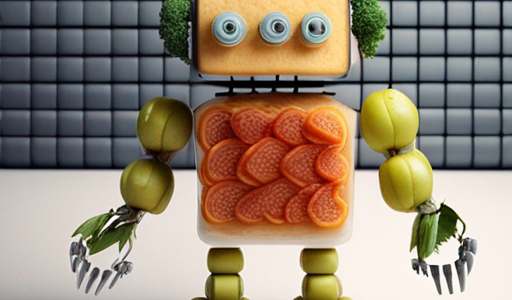We’ve looked at robot rabbis, robot pharmacists, robot astronauts, and robot masseurs. We’ve thought about robot crocodiles, robot dogs, and robot fish. We’ve even considered robots who can make food, serve food, and clean up food. But we have never before considered robots made of food.
European researchers are building robots which are at least partially edible. Using substances like gummy bears, honey, rice cakes, and chocolate, they’ve built batteries, grippers, drone parts, and more. “[Edible robots] could enable precise drug delivery and in vivo health monitoring, deliver autonomously targeted nutrition in emergency situations, reduce waste in farming, facilitate wild animal vaccination and produce novel gastronomical experiences,” the researchers enthuse.
If you’ve ever admired a robot and then thought, “But is it edible?” this will be good news for you.
Never considered RoboFood?
It’s a fair bet that many of us have never yearned for edible electronics of any kind, let alone a robot we could ingest. But a drone that could work with search and rescue operations and also provide calories? It doesn’t sound cost effective compared with attaching a package of food to a reusable drone, but that reusable drone would have to be returned or repurposed. If it were edible, it would not end up in a landfill.
In fact, the idea of reducing electronic waste is one of the motivations for developing edible robots. Edible electronic components will be biodegradable. That means that even if they are not eaten, they won’t produce as much waste as current electronics do. E-waste is largely made up of metal and plastic, but sometimes also contains toxic chemicals.
One example of a largely-edible robot from the Robofood researchers was built own a wheel made of ethyl cellulose, carnauba wax, and olive oil. This doesn’t sound tasty, but it weighs in at over 800 calories, so it could stave off death for someone in perilous circumstances. If their circumstances were not perilous enough to tempt them to eat 800 calories’ worth of cellulose and oil, it still would biodegrade in a reasonable amount of time.
Medical applications
So far, the most realistic use seems to be medical. That is, being able to swallow a robot that was programmed to deliver medication or capture information for diagnosis sounds as though it would actually be useful.
It’s not possible right now, but the experiments with creating robots made of gelatin and rice cakes are steps along the path to ingestible diagnostic robots.
